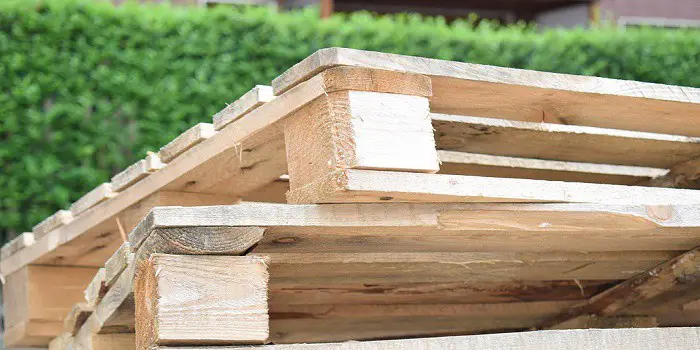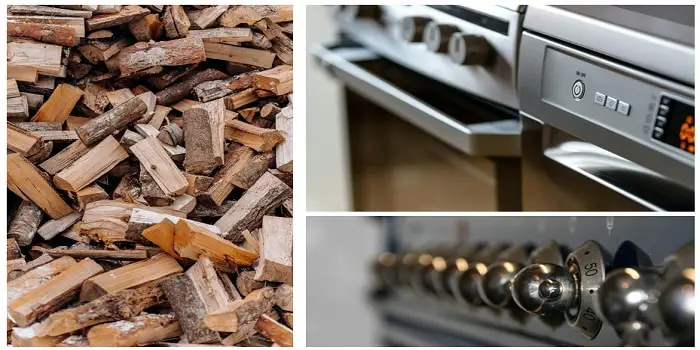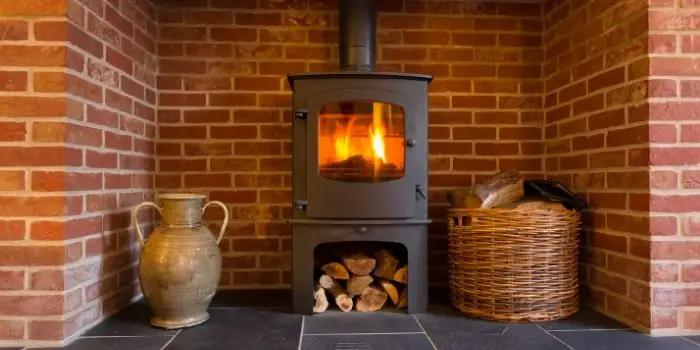
The basement offers the perfect living space for a guest room, den, or activity room.
However, the basement is not connected to the same HVAC system that serves your home. This means it can get quite cold in your basement during the winter.
One method to solve this situation is by adding a wood-burning stove. This potent heating device can efficiently heat even large rooms like your basement.
Adding a wood-burning stove is a good idea if you have a finished basement.
But is a wood-burning stove right for your basement? What will it take to install it? And will it be costly in terms of money and safety if you add a wood burning stove to your basement?
First, it is possible to install a wood burning stove in almost any basement.
But it’s not a good idea in all conditions because you will need to add ventilation which may require a substantial investment on your part.
Also, before you begin, check with fire codes and local building regulations to see if there are any restrictions on putting a wood burning stove in your basement.
Keep in mind that while a wood burning stove can generate significant heat, it is not like an HVAC system.
In other words, a wood burning stove is designed to heat just one room, not the entire home.
HVAC systems use an air handler that distributes the warm air from a furnace to all parts of your home.
A wood burning stove simply does not have the potential to reach the upper floors of your home, even with ductwork.
So, stick to the stove, only heating your basement.
Common Issues With Basement Wood Stoves
The disadvantages of a wood burning fireplace in your basement are that it is expensive to install and maintain and emits pollutants into the air. They can also be a fire hazard if not correctly installed and maintained in the basement.
Additionally, it will require a lot of wood to keep them going, which can be a problem in areas where trees are scarce.
So, what challenges may you face when getting a wood burner installed in the basement? Let’s look at some of the most common ones over here in detail…
1- Fuel
To operate a wood-burning stove, you need wood.
And bringing enough wood into the home requires either a separate exit door from the outside (that leads into the basement) or hauling the wood into the home and down the steps. That can be quite a hassle.
However, if you operate a wood pellet stove, the fuel becomes small and convenient.
2- Vent
Another issue is the proper venting of the smoke generated by a wood burning stove.
Just like a fireplace needs a chimney, so too does a wood burning stove need a vent made of prefabricated metal or masonry that is proof against the heat.
And since installing a chimney requires the exit point above the roof, it may not be easy to install such a vent in your home without extensive work.
Whether a traditional chimney or use of venting, you will need to make at least some modifications that may be expensive to employ.
3- Draft
Another problem is with drafts. Depending on how the venting was installed, the chimney may actually draw cold air into the basement.
This occurs in chimneys installed on the side of homes where cold air will push down into the stove when not in use.
It also occurs when the warm air from the stove rises through the chimney, which runs through the attic.
Any small holes in the chimney will also draw in the cold air and into the basement.
4- Not for Unfinished Basement
Aside from its inability to heat the entire home, a wood burning stove should only be installed in a finished basement.
An unfinished basement has fire hazards present that make it dangerous to install a wood burning stove.
One errant ash can set fire to materials typically covered in a finished basement.
But even in a finished basement, a wood burning stove needs to be monitored regularly.
In other words, you do not want to leave it unattended for long periods.
This may create a fire hazard in your basement, quickly spreading to the rest of the home.
All these may sound like a wood-burning stove is bad for your home.
On the contrary, the issues with such a heating device in a finished basement are minimal compared to the benefits.
Wood Stove in Basement – Inside or Outside Ventilation
Where to run the chimney or vent to allow the exhaust fumes from the wood burning stove to escape?
That is the question homeowners will face.
The first consideration is building codes that may require a chimney to extend at least three feet above the tallest part of the roof.
But more importantly, do you run your chimney outside or inside the home?
a) Outside
This is the easier and cheaper of choices since no major renovation is required.
The chimney is attached to the stove, and the vent extends directly to the outer wall or possibly a window before running up the side of the home.
But one factor many homeowners may not have considered when building a chimney outside the home is the stack effect.
The stack effect refers to the air pressure that is inside the home.
As warm air rises, so too will cold air descend.
If the chimney is inside the home, the heat from home will warm the air in the upper parts of the chimney and allow the heated exhaust fumes to escape with relative ease.
But if the chimney is outside and exposed to the cold air, it will create a stack effect.
This will force the cold air to be instead drawn down the chimney and into the home.
This will create the unwanted draft effect where cold air fills the home.
b) Indoors
If you run the chimney indoors, you will not encounter the stack effect assuming the rest of the home is heated.
However, running a chimney through your home’s interior can be quite costly.
This means cutting holes between the floor joists, securing the chimney to the floor joists, and installing heat shields to prevent any combustible materials near the chimney from becoming overheated and catching on fire.
In addition, running a chimney through rooms can be pretty unsightly and take up valuable living space.
Imagine a potential buyer seeing such a sight in your home when trying to make a sale.
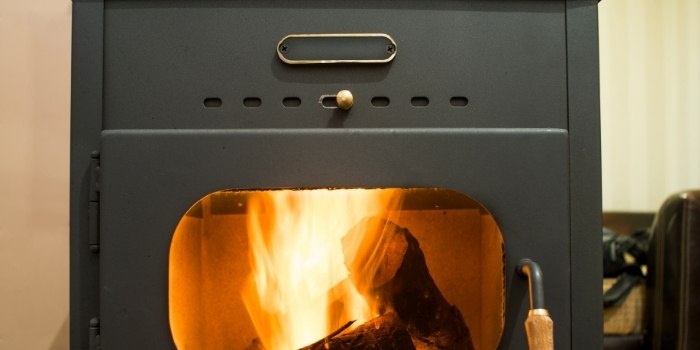
Installing a Wood Burning Stove in the Basement – Step by Step
Whichever venting method you choose, installing a wood burning stove can be accomplished if you follow the proper steps in the correct order.
Step 1- Choose the Location:
You’ll need to install the wood burning stove in the right location in your basement for maximum heating effect.
Unless the wall is masonry, the stove will need at least three feet of clearance on all sides.
You can install thick metal sheeting on the wall that includes at least a one-inch space.
This will allow you to move the stove closer to the wall.
If you plan on installing an exterior chimney, you should position the stove so that it is near the outer wall, preferably under a window or hole in the foundation.
This will allow you to install the chimney with less effort.
For installing an indoor chimney, you will need to plan how the chimney will run through the upper floors of your home.
The less the chimney will have to be redirected to avoid obstacles, the easier it will be to install and the more efficient it will be in allowing the exhaust fumes to escape.
Step 2- Installation of the Pipe:
You will need to use a pipe designed for wood burning stoves.
Such pipes have double, if not triple, layers of insulation which provides protection for wood frames and furnishings.
For an outside chimney, measure the distance between the stove and the exterior opening and cut three-foot-long pipe sections.
Use elbow pipe sections to run it outside the home.
For an indoor chimney, a hole must be cut for each level of the home and through the roof.
Each hole must be about 1/8th of an inch wider than the pipe.
A laser level or plumb bob will help line up the holes so they are straight. If you need to go around obstacles, have your elbow joints ready.
Step 3- Preparation of the Window:
If you are running the pipe on the outside, you will need to create an attic window to let in the chimney.
Use 20-gauge sheet metal and cut it to a size that fits the window or opening.
Then cut a hole 1/8th of an inch larger than the diameter of the chimney.
Secure the sheet metal to the window opening, run the pipe through it, and use a fireclay to seal the area around the opening, so it is airtight.
Remember that if you are installing a wood burning stove in a living space, it must have a window that complies with building codes.
If no window is present, you can cut a hole in the foundation to run the pipe, but that will be a more expensive endeavor.
Step 4- Run Pipe Through the Roof:
Now you are ready to run the pipe through the roof to finish the chimney.
Connect a 90-degree elbow to the pipe outside the house from the basement.
Then run the pipe up the house and secure it to the exterior. Use screws designed for metal piping when securing the pipe.
If you are installing the pipe indoors, use a support kit that will carry the load of the pipe.
Install spanners between the joists and around the hole to add additional support. A fire stop joist should also be installed for every level.
You will need the right flashing and pipe stem collar to prevent leaks when running the pipe through the roof. This will prevent overheating and leaking.
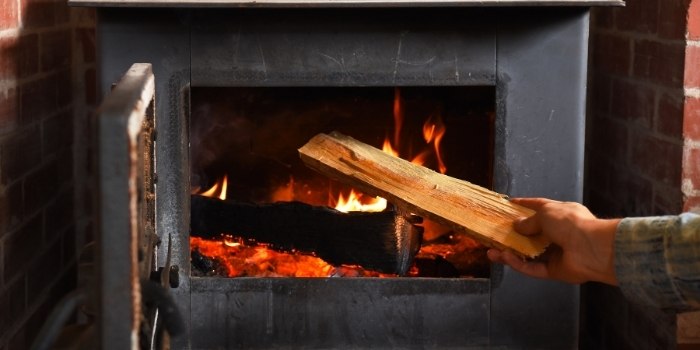
Considerations When Buying a Wood Burning Stove for Basement
Wood-burning stoves are very easy to use. You simply need to load the wood into the stove, light it, and adjust the damper to control the flame.
When buying, there are many different types of wood-burning stoves. Some of the most popular include:
- Cast iron stoves are durable, long-lasting, and good at holding heat, making them ideal for basement use.
- Pellet stoves are efficient, easy to use, and environmentally friendly because they burn pellets from recycled wood.
- Gasification stoves are efficient at burning wood, produce little smoke, and can be used in the basement.
Besides the type, you must consider the size of the unit. The wood stove you choose should neither be too big nor too small for the area you are trying to heat.
You also need to ensure that the stove you purchase is the right size for the space available in your basement.
The second factor is the type of flue you have. The wood stove you purchase should be compatible with the type of flue you have.
The third is the heat output – it should generate enough heat to warm your basement.
Lastly, it would help if you considered the wood stove’s cost. Purchase a unit that is energy efficient and will not cost you a lot of money to operate in the basement.
Share the post "Can I Put Wood Stove in Basement for Heating Whole House?"

Hi, I am Mark Garner a professional carpenter, woodworker, and DIY painter. I live in the small city of Peoria, Arizona as a semi-retired woodworker. I have started this blog with a simple motive to help you with my wood experience in this sector. If you like to know more about what I love doing and how it all got started, you can check more about me here.

